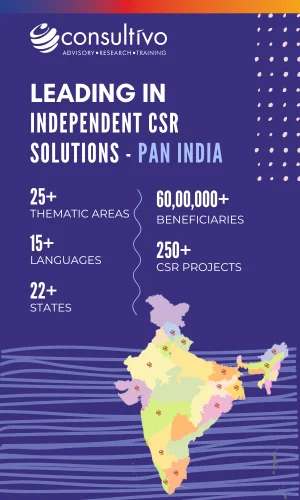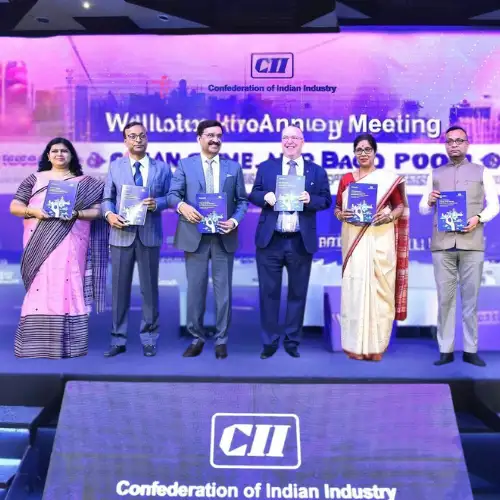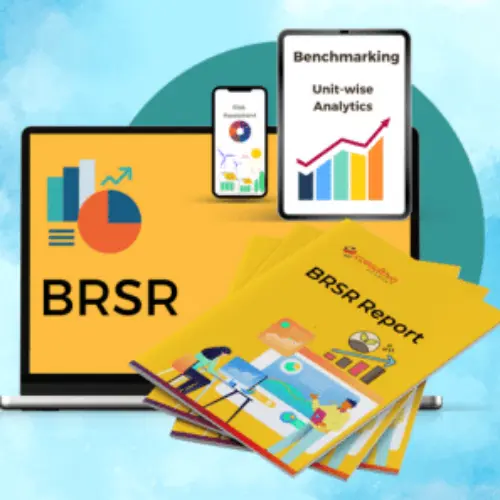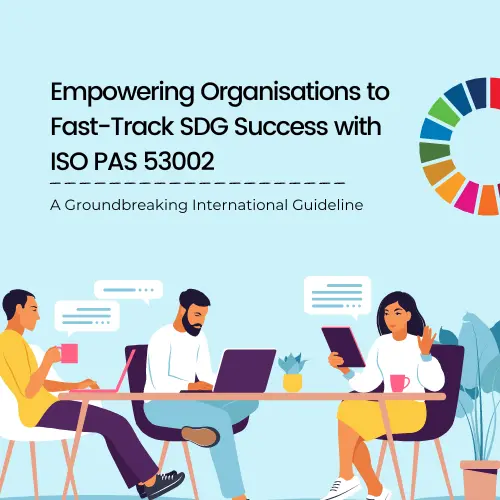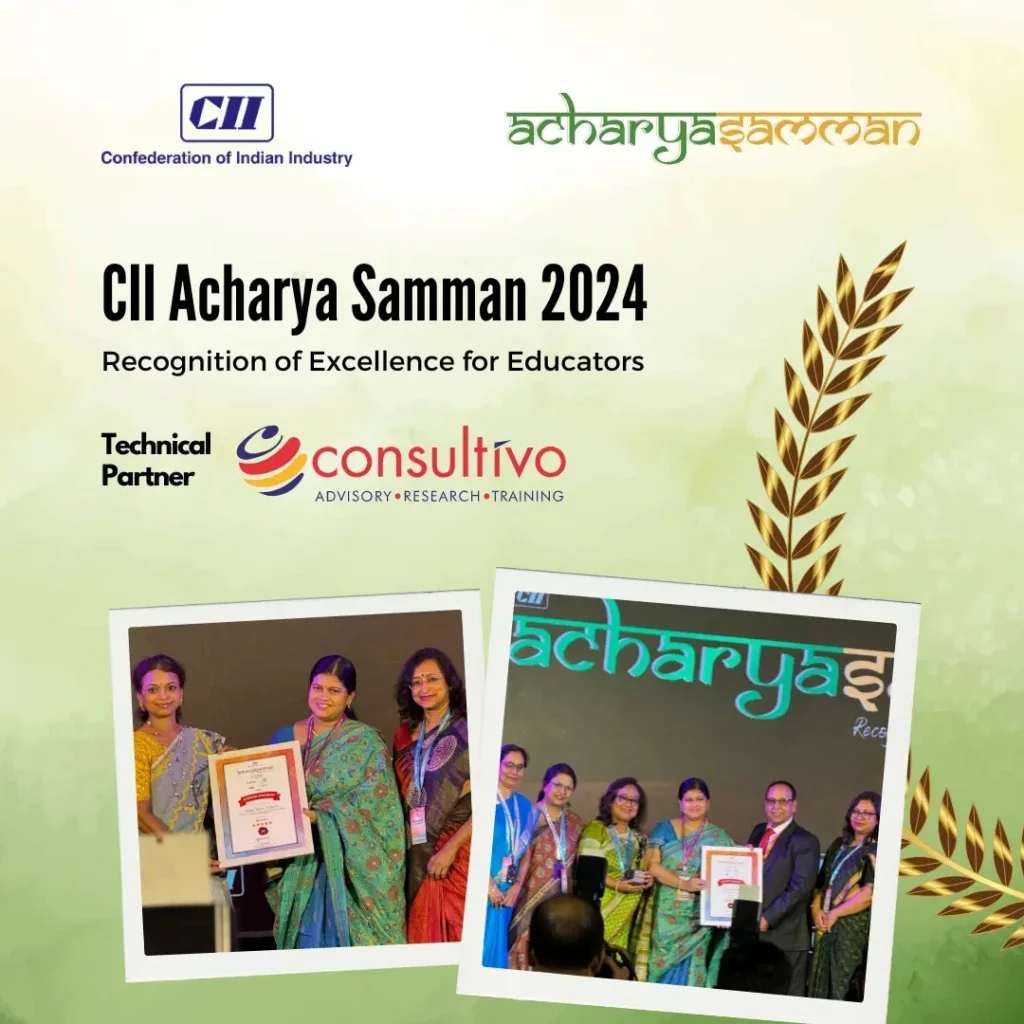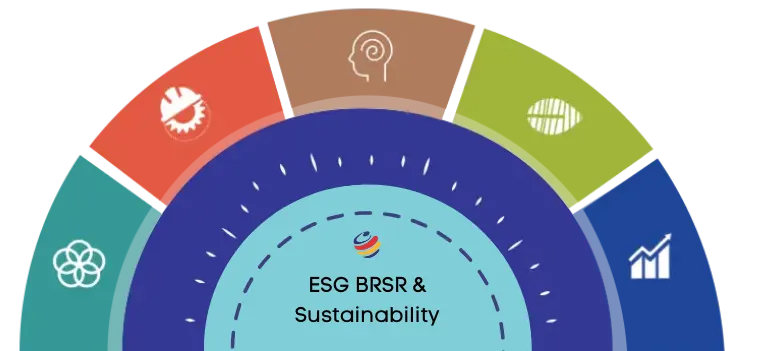Theory of Change (ToC) is a comprehensive, structured methodology of how a development project or program is expected to achieve its intended outcomes.
A Theory of Change helps you to ensure that your project-related inputs and activities lead to tangible results that add up to the desired change.
The theory of change framework is an approach used by organisations to outline their long-term goals, identify key strategies, and map activities and pathways that lead to the desired outputs, outcomes and impact. It clarifies how activities and interventions contribute to positive social impact.
CSR and Theory of Change
Corporate Social Responsibility (CSR) has become an increasingly important concept for businesses and organisations around the world.
Progressively, impact assessment of CSR projects or developmental projects involve taking responsibility for the positive change that an initiative has on society and the environment, beyond just the financial bottom line.
A Theory of Change (ToC) of a project describes why change is needed and how it will materialise
Theory of Change is a model or method that assists organisations and development practitioners in the planning, designing, implementation and CSR project impact assessment activities. It supports them to make projects more effective and sustainable.
A ToC outlines the causal pathways through which a project’s activities, outputs, and outcomes are expected to lead to the intended impact. It is essentially a visual representation or a roadmap that shows how a project’s activities will lead to a desired change in the lives of the targeted beneficiaries.
It starts with the eventual target of the project and clarifies it into smaller, attainable programmes that link with each other and ultimately lead to the desired impact.
Elements of ToC
A typical ToC may include the following elements:
The ultimate goal or impact
The impact is the fundamental change that you hope to see in the long term. Impact usually takes a few years to take effect, which makes it demanding to measure, but it gives us a great foundation to define the outcomes that are within our reach to influence and measure.
Impacts can be productive or negative.
Outcomes of the project
Outcomes are the intended and unintended changes that your stakeholders are experiencing or might experience with your intervention. In other words, outcomes are the far-reaching benefits we work to accomplish.
A well-crafted Theory of Change should include all three: long-term outcomes, mid-term outcomes, and short-term outcomes.
As you exhibit a clear advancement in your outcomes, you are more inclined to get other players such as government or public and private partners to become involved and help you scale your mission.
Intermediate outputs or objectives are those that need to be achieved to reach the ultimate goal.
Output
The outputs are the immediate results of our activities or products, and they are necessary for achieving the outcomes. Consider them as positive or leading indicators that the outcomes are on track.
Activities or interventions
Inputs
Inputs refer to the resources or investments needed to ensure that the activities take place.
Assumptions and external factors
Indicators and measures
Indicators and measures are performance measurement milestones used to monitor and evaluate progress toward the intended outcomes.
A Case Study on Theory of Change (ToC)
Here is an example of how the Theory of Change (ToC) can be applied in the context of a development project:
Let’s say a development organization wants to improve the livelihoods of small-scale farmers in a rural community. They might develop a ToC to guide their intervention. The ToC could include the following:
Assumption
Small-scale farmers have limited access to markets and technology, which restricts their ability to earn a sustainable income.
Intervention
Provide guidance and backing to small-scale farmers to boost their expertise and abilities in sustainable and viable agriculture practices, entry to markets, and better pricing for their products.
Outcome
Small-scale farmers enhance their farming practices and yield, have access to new markets, and reinforce their income, leading to improved livelihoods.
Impact
Improved livelihoods of the farmers lead to reduced poverty and increased economic growth in the rural community.
The Theory of Change would then guide the development organisation’s program design, implementation, and CSR program monitoring and evaluation efforts to ensure that they are staying on track and achieving their intended outcomes and impact.
By using a ToC, the organisation can ensure that its mediation is based on accurate assumptions and information and that it has a clear awareness of how its activities will lead to the desired outcomes and impact.
How is the ToC developed?
ToCs are typically developed through a participatory process that involves stakeholders, including beneficiaries, donors, partners, and other key actors.
Step 1. Outline the issue, including the reasoned root causes and stakeholders.
Step 2. Delineate the desired end goal (impact).
Step 3. Designate long and short-term results (outcomes and outputs) needed to achieve the desired end goal.
Step 4. Picture activities that could lead to short and long-term results.
Step 5. Establish the main premises. How credible valid or ambiguous are they?
This mechanism ensures that the ToC is based on a mutual understanding of the problem, the context, and the proposed solutions and that it takes into account the viewpoints and needs of all stakeholders.
How does the ToC help organisations?
A well-developed ToC can help organisations and development practitioners to:
- Clarify their goals and objectives
- Identify potential risks and assumptions
- Develop a more strategic and coherent approach to project design and implementation
- Monitor and evaluate progress toward the intended outcomes
- Help in impact assessment of CSR projects
- Communicate the project’s rationale, logic, and expected results to stakeholders.
Overall, a Theory of Change is an essential tool for designing and implementing effective and sustainable development projects.
By providing a clear and comprehensive roadmap of how a project’s activities will lead to its intended impact, a ToC can help ensure that development efforts are more focused, strategic, and impactful.
It’s important to consider the Theory of Change during the ideation and planning of a new project or initiative and monitor to make sure we’re still on track.
Are the ToC and logframe approach related?
Yes, the Theory of Change and the Log-frame Approach are related concepts in the field of development project planning and management.
Even though “theory of change” and “logic model” are not identical, they are often used interchangeably because both of them aim to provide a precise structure for grasping how a program or intervention is expected to achieve its intended outcomes.
While a logic model provides a more explicit and direct diagram of the causal relationships between a program’s inputs, activities, outputs, and outcomes, a theory of change takes a more comprehensive approach. It seeks to explain the underlying rationale and hypotheses guiding the program’s development.
The Theory of Change (ToC) is a comprehensive and participatory approach used to plan, implement, and evaluate development projects. The ToC process involves identifying the ultimate goal of the project and the intermediate outcomes that are necessary to achieve that goal.
It also involves pinpointing the inputs and activities required to realise those outcomes, as well as the assumptions and uncertainties that may impact the success of the project.
The Log-frame Approach, on the other hand, is a more structured and linear approach to project planning, implementation, and evaluation. The Log-frame Approach uses a matrix to outline the project’s objectives, activities, inputs, outputs, outcomes, and impact. The Log-frame Matrix is used to ensure that project activities are aligned with project objectives and to identify potential risks and assumptions that may affect the chances of success of the project.
While the Log-frame Approach and the Theory of Change have different origins and approaches, they are complementary and can be used together in development project planning and management.
The ToC provides a more comprehensive and participatory approach to project planning, while the Log-frame Approach provides a more structured and linear approach to project management.
Using both approaches together can help to ensure that development projects are well-planned, effectively implemented, and achieve their intended outcomes and impact.
Good Practices Checklist for Implementation of Theory of Change
- Align the theory of change with your initiative, project, or program and stated mission right from the inception.
- Use need assessment study and baseline assessment results – consider them as the starting point of change.
- The most critical components to monitor are the Outputs, Outcomes, and Impact. Define suitable metrics (KPIs) and track results over time.
- Ensure to include your key stakeholders. A stakeholder is any person who benefits or is affected by your activities.
- Communicate the desired and achieved changes judiciously – develop communication plan and publish development or CSR project disclosure reporting.
ToC Worksheet
ToC Element 1: Problem statement
Guiding question: What social issues do you need to consider?
Example: The problem statement defines the problem and its underlying causes. Why is it a problem, and who is affected by it?
The construction industry is the second biggest industry in the country after agriculture, devolving a high share of employment. It involves large-scale migration of people from their native villages to escape extreme rural poverty and find employment in cities.
The main beneficiaries of the program are children in and around the construction sites and slums in Pune City. These environments are not helpful or safe for the children and are plagued with countless issues such as extreme living conditions, impoverished conditions of the children on site, and lack of a useful environment at the site.
ToC Element 2: Context
Guiding question: How do you choose a site location for your development project?
Example: The context is the circumstance in which the project takes place. It chronicles stakeholders, regional culture, power equations, other relevant projects, etc
Migration has been a major contributor to slum proliferation and cities undergo peripheral expansion.
Pune city is not an exception and migrants from other parts of the country relocate to Pune for livelihood resulting in an increase in the population. Pune’s slum population grew by 106% during 1991-2001. The growing severity of these problems has resulted in the education of the children being the element of least priority.
A large number of dropouts among these children offers evidence that compulsory education no longer serves as an effective means of equalising opportunity for economic and social advancement as corroborated by data (ASER Reports and Government Statistics)
The program works towards promoting education and imparting literacy skills among the socially and economically disadvantaged children of urban slum communities and the construction sites in Pune city.
ToC Element 3: The desired end goal (Impact)
Guiding question: What do we want to achieve through a social project?
Example:
The impact is usually a long-term result and it may not be attainable even during the life cycle of the project.
Taking the example of a human rights seminar, if the community has received an authorisation of human rights by the government, then it is an impact the project contributed to, though it is usually seen after several years.
- Increased enrolment, retention, and dip in absenteeism in formal schools of migrant children as a result of support services provided.
- Prevention of children being employed in construction sites.
- Significant improvement in the reading and numeracy abilities of the children leading to an improved academic performance
- Overall improvement in the personality of the children due to increased focus, discipline, and structured schedule.
- A positive shift in parents’ attitudes resulting in increased enrolment and continuity of children in mainstream schools.
- Active involvement and participation of the parents in the child’s education and taking ownership and responsibility of their child’s education
- Continuation of education by the children despite frequent migration by parents to other locations
ToC Element 4: Outcomes
Guiding question: What change do we want?
Example:
Outcomes can be treated as mid-term results. Outcomes often take time to surface: they are not seen immediately after the end of the activity. These changes must be reasonably associated with your activities.
Taking the example of a human rights seminar, if the participants have started to organise their community members to pursue their human rights, then it is an outcome of the project.
- 65% improvement in student learning outcome
- 38% improvement in number of enrolments
- 45% in reading proficiency of the students from baseline
- Ratio between the number of the students enrolled and sustained has improved
ToC Element 5: Outputs
Guiding question: What do we produce or provide?
Example:
Outputs are the short-term results that are achieved immediately after implementing an activity. Outputs give you an understanding of what you produced or mobilised. They are under your direct supervision.
Take the example of a human rights workshop, if the participants exhibit increased knowledge and awareness about human rights principles, enhanced skills, and a sense of empowerment to protect human rights in their communities, then these are the outcomes of the project.
- School enrollment for classes for children aged between 9-14 years.
- Pre-school Education Programs for 3-6-year-olds started
- Day Care Centre facilities for children of age group 0-3 years.
ToC Element 6: Activities
Guiding question: What do we do?
Example:
Activities are the things we do or resolve.
- Adopting a pedagogical approach of structuring and targeting lessons to the learning levels of students.
- The curriculum is devised to set learning goals to realise the expected level of learning within a period of 120 days.
- School Support Services which include transportation facilities to the schools and daycare centers to look after younger siblings to encourage older children to attend schools and reduce dropouts.
- Teachers trained in child-centric pedagogy through a dedicated training center “Parivartan”
- Regular parent-teacher communication and interaction to keep them informed of the child’s progress and educate them on ways to support the child to ensure regular attendance to school.
- Efforts to increase the enrolment rate in formal schools in alignment with the Right to Education Act, and regular monitoring and tracking of dropouts to facilitate re-enrolment.
ToC Element 7: Inputs
Guiding question: What do we deploy?
Example:
Inputs are the resources required for a project, program, or policy, such as funding, staffing, equipment, curriculum materials, and so on.
- Program structure, resources, planning, policy, funding, curriculum, etc.
ToC Element 8: Assumptions
Guiding question: What do we presume?
Example:
Assumptions are the essential conditions for change or the “underlying conditions or resources that need to exist for planned change to occur”. If the assumptions hold true, the likelihood is that results will be achieved.
Schools are willing to provide support to conduct such programs.
The government or any other partner organisations will support the initiative by providing funding.
ToC Element 9: Risks
Guiding question: What factors can impair our success?
Example:
Risks are possible events or occurrences that could negatively affect the achievement of results.
Unsupportive school environment or community disruption.
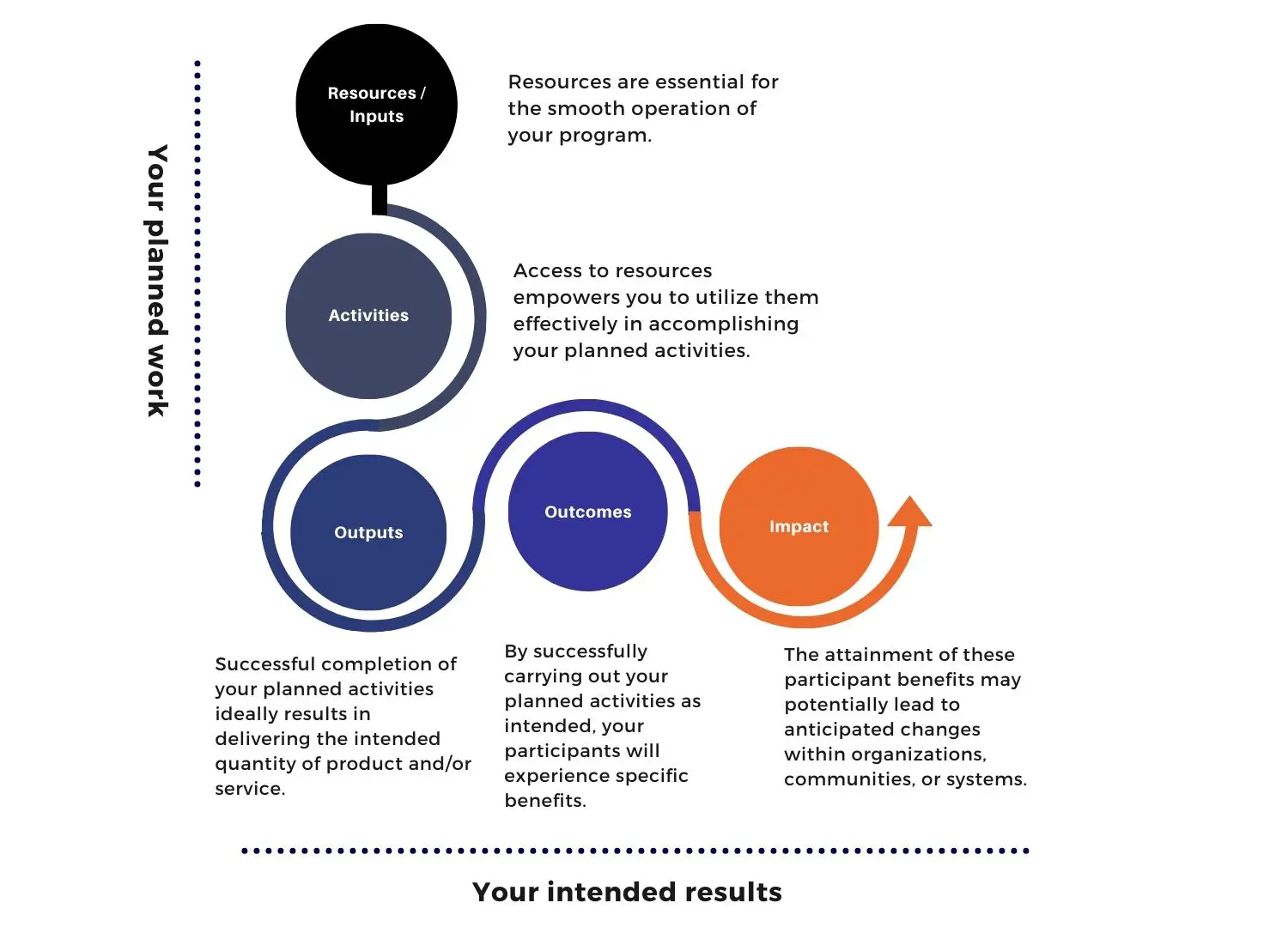

Share this post
Category: Blog
Tags: Social & Sustainability, CSR
About the author
Director – Sustainable solutions at Consultivo
Madhabi Guha specialises in the domains of ESG, Social Compliance, Business and Human Rights, Development Projects and focuses on supporting go-to-market teams along with customer and partner relationships. Madhabi has been working in the sustainability & business excellence advisory business for over 14 years.
Madhabi has been developing individuals, teams, and organisations in the areas of leadership, excellence and Human Factors in the field of sustainability, people and community.
Related insights
View more in Impact Stories | Blogs | Knowledge Bank | News and Events

